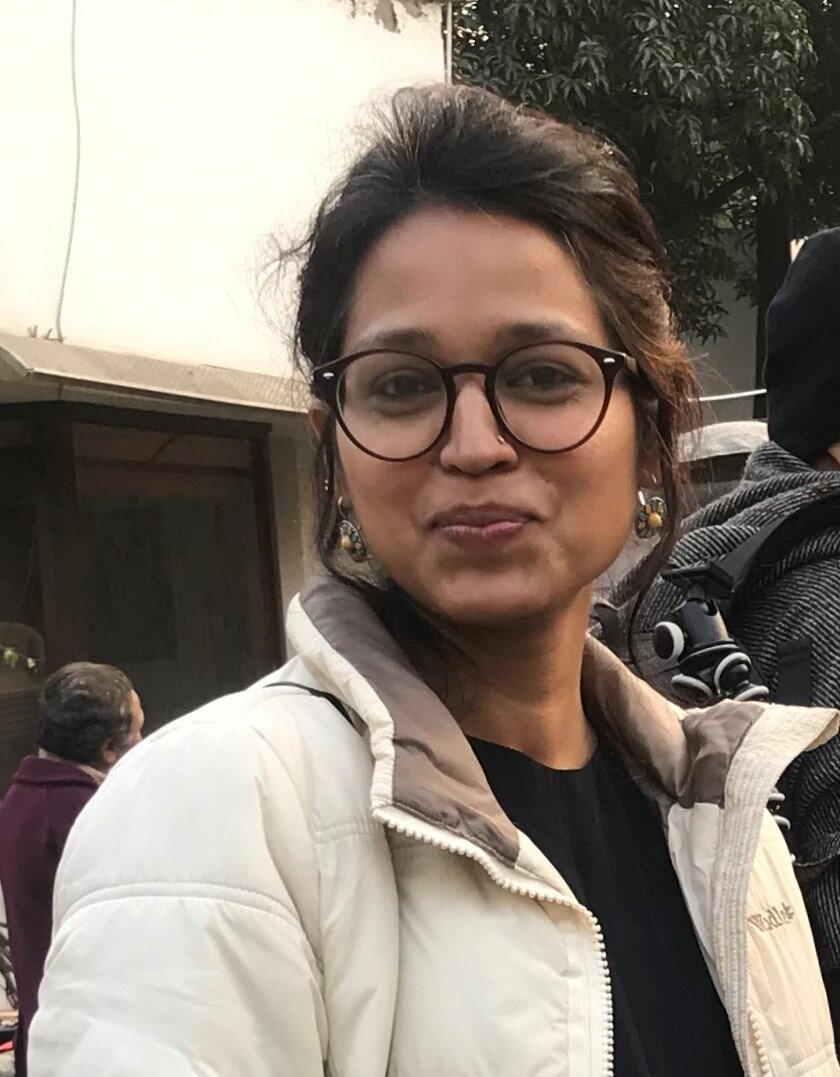Nisha Dedhwal
 The term ‘Social Distancing’ held/holds/shall hold different meanings in the Indian past, present and future. The term being social in nature holds the potential to be approached distinctly by people belonging to different socio-economic-caste-gender-cultural backgrounds. Messages from different brands, celebrities endorsing ‘Social Distancing’ are being widely shared as part of an awareness campaign by people through their display pictures on WhatsApp, Facebook statuses, Instagram stories, hoardings, advertisements and in many other ways on social media, across the world. The creative, adventurous yet political world of advertisements is successfully spreading awareness about the need for socially distancing from each other in order to fight the pandemic.
The term ‘Social Distancing’ held/holds/shall hold different meanings in the Indian past, present and future. The term being social in nature holds the potential to be approached distinctly by people belonging to different socio-economic-caste-gender-cultural backgrounds. Messages from different brands, celebrities endorsing ‘Social Distancing’ are being widely shared as part of an awareness campaign by people through their display pictures on WhatsApp, Facebook statuses, Instagram stories, hoardings, advertisements and in many other ways on social media, across the world. The creative, adventurous yet political world of advertisements is successfully spreading awareness about the need for socially distancing from each other in order to fight the pandemic.
I personally couldn’t post the message of ‘Social Distancing’ on my WhatsApp display picture, simply because I perceived it differently. This difference in perceived meaning for the term might be a result of the pernicious dichotomy discussed by Gopal Guru in his edited book ‘The Cracked Mirror’–the lack of egalitarian conditions in social science practice in the country. The blind adoption of the term ‘Social Distancing’ denying its contextual roots in Indian history, comes as part and parcel of the analogy that Indian social science represents: “a pernicious divide between theoretical Brahmins and Empirical Shudras”( Guru,2012).
An Experiential Construct
To bring forth the importance of social conditions unique to location of each individual, I refer to the recent telecast of Ramayan. Watching Ramayan in my childhood left me with an unanswered question for years: ‘why did the little children, their mothers from the neighborhood, who came to our house (as we had television), sharp on time, to watch Ramayan and to gossip, laugh, dance, never ever eat anything or touch a glass of water?’ This memory is of days when we used to visit our hometown in a small village in Himachal Pradesh during almost all summer vacations in my childhood. The memory stayed with me as a conflict for years. It is watching Ramayana now that has provided answers to all those questions related to why people maintain distance. The phenomenon of ‘Social Distancing’ in the Hindu society is inherently passed from generation to generation; explaining why Ramayan breaks TRP records in 2020.
‘Social Distancing’ came to me as a remembrance of the day of panic when for the first time I realized the fear of being socially distanced from my own close childhood friends. It was the day when our entrance test result for the bachelor degree course was to be declared. More than a day of excitement, it became a day of terror. Reaching the department, I was as excited about my results as the others, till the moment I was part of the crowd assembled there. Not being able to see my name on the list somehow didn’t make me fearful of not being able to crack the exam, but it gave me a jolt for not being a part of the crowd. It was the momentary realization of the fact that my results were displayed on a separate notice board, socially distanced from the notice board displaying results of my friends.
It is all of those experiences that bring the phenomenon of ‘Social Distancing’ as part of a caste pandemic rather than the corona pandemic to many of us. I am sure it must have come differently to one of my colleagues, whom I had interviewed for my PhD research data collection. While responding to the question “What was your first encounter with caste as an adult?” her response shared through an incident from her college days. When one of her friends was unwell for a weeks’ time, she asked for help to hand over class notes by visiting her place. On reaching her house where everything was normal until the time she was offered a glass of water. The glass being touched by her hands became a matter of grave concern to her friend’s dadi. What she must have experienced when she was asked to be careful with the glass and was made to keep the glass at the entrance of the house where she had placed her chappals, must have been one of her first experiences of ‘Social Distancing’. I need not share that people coming from different caste groups must have encountered ‘Social Distancing’ much before the corona pandemic in some or other forms. Be it Rohith Vemula, who wanted be a writer of science like Carl Sagan, who socially distanced himselfm saying in his suicide note “know that I am happy than being alive”. The unappreciated child from the past must have had his own claims of identity grounded in specific experiences of his lonely childhood. In a similar context, it was Ambedkar who wrote “I did not know what was untouchability till I was asked to sit separately in my school”.
Caste and Importance of Distancing
In a society confronting social-moral-cultural chaos it is experience that is the major content of self consciousness. Ambedkar followed this methodology while developing his thought wherein he believed that the need isn’t to get swayed by the nature of atrocities but to force ourselves into exploring the origins of the same; without mistaking the effect for the cause. He argued caste is not a physical object like a wall of brick or a line of barbed wire which prevents the Hindus from commingling and which has therefore to be pulled down. To elucidate the mystery of the growth and development of castes all over India, he explained in the article Castes in India how “at some time in the history of the Hindus, the priestly class socially detached itself from the rest of the body of people and through a closed-door policy became a caste by itself”. Therefore it was the priestly caste which raised the ‘enclosure’ around themselves first and while closing themselves in, they closed others out.
Different connotations of caste in Ambedkar’s terms, such as an ‘Enclosed Class’ , ‘Graded Hierarchy’ or ‘Superposition of endogamy on exogamy’–all commonly proclaim a sense of social distancing. Terms used in a similar context, namely Savarna, generally contrasted with Avarna, (someone doesn’t belong to any of the varnas), Antyaja (the last born), Dwijas (superior to all other classes in status) refer to the social superiority to be maintained through distancing. It is the same idea inscribed in, and further eulogized by the religious texts. The Brahminical law giver Manu in Manu-Smriti follows says: “If a low-born man endeavors to sit down by the side of a high-born man, he should be banished after being branded on the hip or (the king) may cause his backside to be cut off”. It includes metamorphic interpretations of distancing Shudras from learning opportunities as Manu further proclaims “one should never recite (the Vedas) in the presence of a Shudra”. In a similar context, it proposes distancing Shudras from possessions as Manu further claims “A Brahmin may take possession of the goods of a Shudra with perfect peace of mind, for, since nothing at all belongs to this Shudra as his own, he is one whose property may be taken away by his master”.
Ignoring the socio-cultural, historical and psychological interpretations of ‘Social Distancing’ in growth and development of caste across India, the term was blindly adopted by the current regime. Ambedkar argued caste is a notion; it is a state of mind. The destruction of caste does not therefore mean the destruction of a physical barrier; it means a notional change. ‘Social Distancing’ widely propagated across India as a measure for control of the corona pandemic is in actuality a mere physical barrier. Thus it requires to be located within the pandemic of caste, revealing its real meaning. The current article urges readers to take cognizance of histories that have been forgotten, denied, neglected and made fun of. Histories of betrayal and terror that are inseparable from the present. The idea that‘Social Distancing’ is a cure for the corona pandemic has not only mechanical but social and psychological interpretations too. As a suggestive idea, the term ‘Physical Distancing’ makes much more sense to be utilized to stop the spread of corona instead of ‘Social Distancing’ which is so deeply rooted within the caste based Hindu society. The adverse effect of not being conscious of the same may lead to negating the histories of the present. In the conceptualization of caste where history of the present becomes necessarily crucial, the present oblivious of history can legitimize wrong ways of approaching caste.
~~~
Nisha Dedhwal is a Ph.D research scholar at Central Institute of Education, University of Delhi working on the topic “Caste as an Institution: Exploring Contemporary trajectories”. She is currently teaching as an Assistant Professor in Department of Education, Shayama Prasad Mukherji College for Women, University of Delhi.









